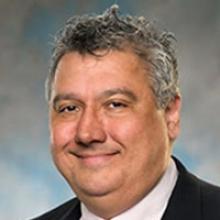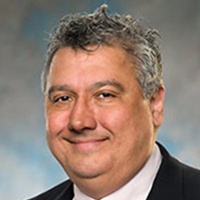User login
LOS ANGELES—Treatment for as long as four years with adjunctive perampanel is safe and effective for adolescents with secondarily generalized seizures or primary generalized tonic-clonic seizures, according to a post hoc study presented at the 70th Annual Meeting of the American Academy of Neurology. “These post hoc results are encouraging, given the refractory nature of these seizure types,” said the investigators.
Perampanel has regulatory approval for the treatment of partial seizures with or without secondarily generalized seizures, and for the adjunctive treatment of primary generalized tonic-clonic seizures in patients age 12 and younger with epilepsy. Phase II and III randomized, double-blind, placebo-controlled trials indicated that adjunctive perampanel (at doses of 12 mg/day or less) was effective and tolerable in patients with these types of seizures in idiopathic generalized epilepsy. The participants who completed these studies were eligible to enter one of four open-label extension studies.
Jesus Eric Piña-Garza, MD, a pediatric neurologist at the Children’s Hospital at TriStar Centennial in Nashville, and colleagues used data from these open-label extension studies to assess the long-term efficacy and safety of adjunctive perampanel in patients from ages 12 to 17 with secondarily generalized seizures or primary generalized tonic-clonic seizures.
The extension studies incorporated a blinded conversion period that lasted for six to 16 weeks, during which perampanel dose was optimized (at 12 mg/day or less), and a maintenance phase that lasted for 27 to 256 weeks. Total drug exposure was as long as five years. All patients received perampanel during these studies. Efficacy and safety assessments, which were performed for as long as four years, included median percent change in seizure frequency per 28 days and 50% and 75% responder and seizure-freedom rates. Investigators also monitored treatment-emergent adverse events.
The investigators included 129 adolescent patients in the safety analysis set, including 109 with secondarily generalized seizures and 19 with primary generalized tonic-clonic seizures. During the first year, median percent reductions in seizure frequency per 28 days were 62.8% for patients with secondarily generalized seizures and 84.0% for patients with primary generalized tonic-clonic seizures. During year four, median percent reductions in seizure frequency per 28 days were 73.2% for patients with secondarily generalized seizures and 100.0% for patients with primary generalized tonic-clonic seizures. The 50% responder rates were 56.9% for patients with secondarily generalized seizures and 63.2% for patients with primary generalized tonic-clonic seizures in year one, and 65.2% for patients with secondarily generalized seizures and 100.0% for patients with primary generalized tonic-clonic seizures in year four.
For each seizure type, the incidence of treatment-emergent adverse events was highest during the first year of perampanel exposure. The most common treatment-emergent adverse events were dizziness, somnolence, and nasopharyngitis.
The study was supported by Eisai.
LOS ANGELES—Treatment for as long as four years with adjunctive perampanel is safe and effective for adolescents with secondarily generalized seizures or primary generalized tonic-clonic seizures, according to a post hoc study presented at the 70th Annual Meeting of the American Academy of Neurology. “These post hoc results are encouraging, given the refractory nature of these seizure types,” said the investigators.
Perampanel has regulatory approval for the treatment of partial seizures with or without secondarily generalized seizures, and for the adjunctive treatment of primary generalized tonic-clonic seizures in patients age 12 and younger with epilepsy. Phase II and III randomized, double-blind, placebo-controlled trials indicated that adjunctive perampanel (at doses of 12 mg/day or less) was effective and tolerable in patients with these types of seizures in idiopathic generalized epilepsy. The participants who completed these studies were eligible to enter one of four open-label extension studies.
Jesus Eric Piña-Garza, MD, a pediatric neurologist at the Children’s Hospital at TriStar Centennial in Nashville, and colleagues used data from these open-label extension studies to assess the long-term efficacy and safety of adjunctive perampanel in patients from ages 12 to 17 with secondarily generalized seizures or primary generalized tonic-clonic seizures.
The extension studies incorporated a blinded conversion period that lasted for six to 16 weeks, during which perampanel dose was optimized (at 12 mg/day or less), and a maintenance phase that lasted for 27 to 256 weeks. Total drug exposure was as long as five years. All patients received perampanel during these studies. Efficacy and safety assessments, which were performed for as long as four years, included median percent change in seizure frequency per 28 days and 50% and 75% responder and seizure-freedom rates. Investigators also monitored treatment-emergent adverse events.
The investigators included 129 adolescent patients in the safety analysis set, including 109 with secondarily generalized seizures and 19 with primary generalized tonic-clonic seizures. During the first year, median percent reductions in seizure frequency per 28 days were 62.8% for patients with secondarily generalized seizures and 84.0% for patients with primary generalized tonic-clonic seizures. During year four, median percent reductions in seizure frequency per 28 days were 73.2% for patients with secondarily generalized seizures and 100.0% for patients with primary generalized tonic-clonic seizures. The 50% responder rates were 56.9% for patients with secondarily generalized seizures and 63.2% for patients with primary generalized tonic-clonic seizures in year one, and 65.2% for patients with secondarily generalized seizures and 100.0% for patients with primary generalized tonic-clonic seizures in year four.
For each seizure type, the incidence of treatment-emergent adverse events was highest during the first year of perampanel exposure. The most common treatment-emergent adverse events were dizziness, somnolence, and nasopharyngitis.
The study was supported by Eisai.
LOS ANGELES—Treatment for as long as four years with adjunctive perampanel is safe and effective for adolescents with secondarily generalized seizures or primary generalized tonic-clonic seizures, according to a post hoc study presented at the 70th Annual Meeting of the American Academy of Neurology. “These post hoc results are encouraging, given the refractory nature of these seizure types,” said the investigators.
Perampanel has regulatory approval for the treatment of partial seizures with or without secondarily generalized seizures, and for the adjunctive treatment of primary generalized tonic-clonic seizures in patients age 12 and younger with epilepsy. Phase II and III randomized, double-blind, placebo-controlled trials indicated that adjunctive perampanel (at doses of 12 mg/day or less) was effective and tolerable in patients with these types of seizures in idiopathic generalized epilepsy. The participants who completed these studies were eligible to enter one of four open-label extension studies.
Jesus Eric Piña-Garza, MD, a pediatric neurologist at the Children’s Hospital at TriStar Centennial in Nashville, and colleagues used data from these open-label extension studies to assess the long-term efficacy and safety of adjunctive perampanel in patients from ages 12 to 17 with secondarily generalized seizures or primary generalized tonic-clonic seizures.
The extension studies incorporated a blinded conversion period that lasted for six to 16 weeks, during which perampanel dose was optimized (at 12 mg/day or less), and a maintenance phase that lasted for 27 to 256 weeks. Total drug exposure was as long as five years. All patients received perampanel during these studies. Efficacy and safety assessments, which were performed for as long as four years, included median percent change in seizure frequency per 28 days and 50% and 75% responder and seizure-freedom rates. Investigators also monitored treatment-emergent adverse events.
The investigators included 129 adolescent patients in the safety analysis set, including 109 with secondarily generalized seizures and 19 with primary generalized tonic-clonic seizures. During the first year, median percent reductions in seizure frequency per 28 days were 62.8% for patients with secondarily generalized seizures and 84.0% for patients with primary generalized tonic-clonic seizures. During year four, median percent reductions in seizure frequency per 28 days were 73.2% for patients with secondarily generalized seizures and 100.0% for patients with primary generalized tonic-clonic seizures. The 50% responder rates were 56.9% for patients with secondarily generalized seizures and 63.2% for patients with primary generalized tonic-clonic seizures in year one, and 65.2% for patients with secondarily generalized seizures and 100.0% for patients with primary generalized tonic-clonic seizures in year four.
For each seizure type, the incidence of treatment-emergent adverse events was highest during the first year of perampanel exposure. The most common treatment-emergent adverse events were dizziness, somnolence, and nasopharyngitis.
The study was supported by Eisai.

